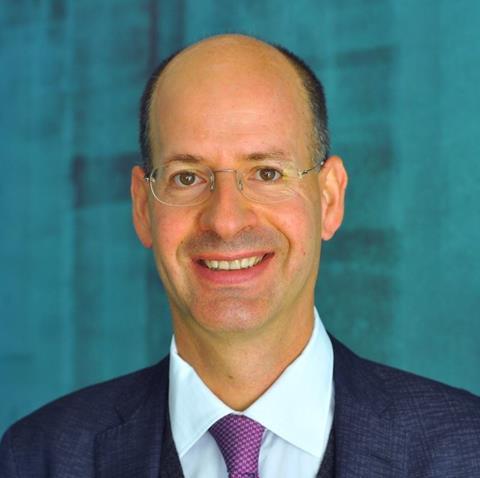Chief economist of Swiss Re Jérôme Haegeli spoke in London as the reinsurer launched its global economic and insurance outlook for 2025/26.
Swiss Re’s group chief economist has said complacency ranks alongside geopolitical risks as the biggest threat to insurers in the coming years.

Jérôme Jean Haegeli (pictured) was speaking in London as the reinsurer launched its global economic and insurance outlook for 2025/26.
He said that the world was still bracing itself for the effects of any new policy decisions by incoming US president-elect Donald Trump.
At present rates are adequate, he said, while warning that to follow a strategy of seeking higher rates had the potential to create future problems should the economy undergo a shock.
“I think we all know the number one threat is from geopolitical risks,” he added. “Ukraine, Middle East, and the ongoing uncertainty around US policy have created significant uncertainty.”
Haegeli continued: “Maybe the number one risk is also complacency.
“As an industry we are conservative investors, and we like quality.
“I think long fixed term investments are favoured as we are long term investors. They will protect you when the downside occurs. My advice is do not chase returns, but the current high yield environment is a positive for insurers.”
He said the chase for the perfect price all too often left underwriters open to shocks and as such there needed to be more proactive steps to brace for any downturn.
“We see higher inflation risks and chances of less interest rate cuts than previously assumed, particularly in the US given the election outcome and the continued strong economy,” he continued.
“Still elevated interest rates could further boost primary insurance markets, especially in life insurance, but a more fragile overall economic environment and volatile geopolitical backdrop raises risks of adverse macro scenarios.
“Early and proactive scenario monitoring will be critical for the insurance industry,” Haegeli added.
Swiss Re expects non-life premiums to grow 2.3% annually in real terms, below the 3.1% average of the last five years.
Further improvements in investment results from still-elevated interest rates should support overall profitability of non-life insurers, according to the reinsurer.
The Swiss Re Institute has forecast an industry return on equity (ROE) at 10% in 2025 and 2026 in the six largest non-life insurance markets, which would exceed the cost of capital.
It added that global economic growth is set to continue at a solid pace. The Swiss Re Institute forecasts global real GDP growth at 2.8% for 2025 and 2.7% for 2026, down from the 3.1% average growth of the pre-pandemic decade. However, there are significant regional divergences and risks are skewed to more adverse scenarios amid heightened geopolitical tensions and trade policy uncertainty.
“The industry has the ability to deliver solid growth, but we need to be mindful of the uncertainties that are still evident in the wider economy and as such have the ability to impact the industry,” explained Haegeli. “The geopolitical environment and the threat that comes with complacency are the biggest risks and insurers need to be aware of both and look at how they can be managed.”
Looking at efforts by the Indian government to close the protections gap Haegeli unless it reduces the current restrictions on the entry of international underwriters into the country it would falter.
Haegeli was asked if he thought that the efforts by the Indian government to address the insurance protection gap were succeeding.
He replied: “I think the government’s ambition to close the protection gap cannot be achieved without a lowering of the barriers to allow entry,” he said. “If the barriers were lowered companies would look to enter a market which has considerable potential for growth and the gap could be addressed. At present there are barriers which are making access difficult.”
He added the biggest risk for the insurance sector and the wider economy was the uncertainty around the plans by incoming US president Donald Trump to impose tariffs on goods, particularly those from China, in an effort to drive inward investments.
“When we present the outlook, we will always look for a letter that can define the current issues,” Haegeli explained. “The key letter this year is ‘T’. That is T for tariffs, taxes, and a decrease in trade. It could also be T for tipping point as there are so many uncertainties around future US presidential decisions.
He said: “If the US imposes a 10% tariff on goods and a higher tariff on Chinese goods it is likely to have an inflationary effect across the world. It will also change the supply chain.”










No comments yet